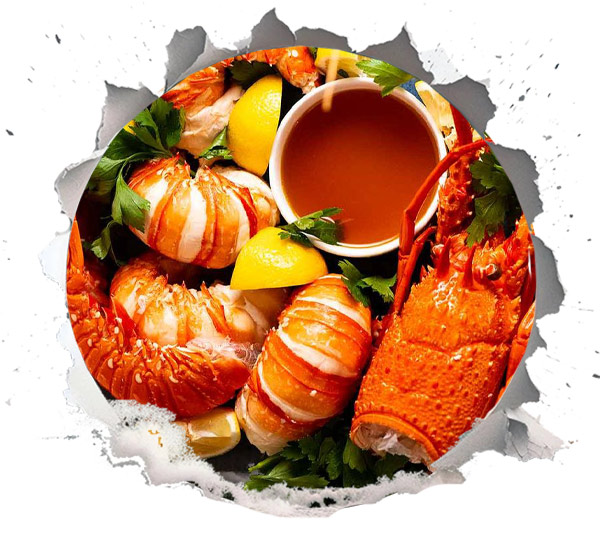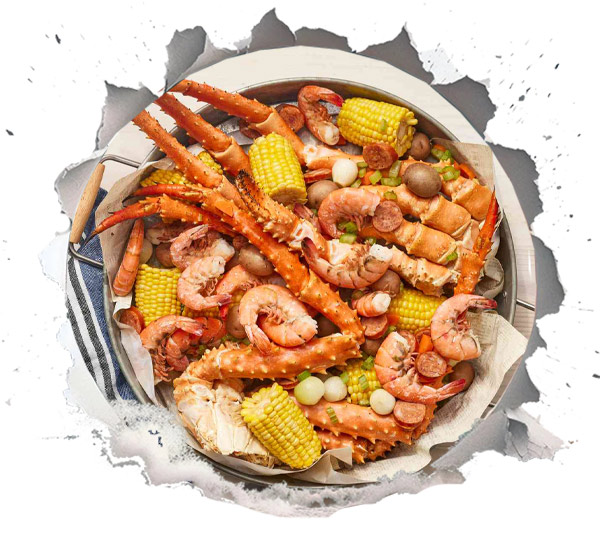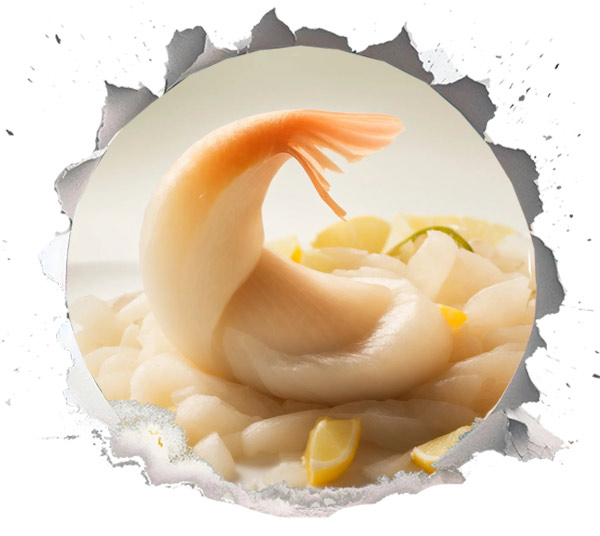The Most Expensive Seafood in the World: Discover What Makes Them Priceless

Seafood has always been an important aspect of culinary traditions worldwide, known for its delicious flavours and health benefits. However, some types of seafood are more than merely tasty and nutritious—they are considered luxurious. In this article, we will explore the most expensive seafood in the world and discover what renders these delicacies so desirable and valuable.
1. Almas Caviar – the Most Expensive Seafood

The most expensive seafood in the world is wild Caspian Sea Almas caviar, derived from the rare albino Beluga sturgeon (Huso huso) found primarily in the Caspian Sea. This delicacy is priceless, if legally sourced, due to its extreme rarity and unparalleled quality. Almas caviar is also known as the most expensive caviar in the world. This luxurious food is famous for its high quality and unique taste, making it popular in fine dining.
Why is Almas Caviar So Expensive?
Farmed Almas caviar can cost over £23,000 per kilogram, making it the most expensive seafood available. Several things make it so expensive:
- Rarity: The albino Beluga sturgeon is exceptionally rare in the wild, with populations drastically reduced due to overfishing and habitat loss in the Caspian Sea. Legal harvesting is tightly regulated under international laws like CITES. Now, only a few farms produce Almas caviar worldwide; Iranian farms like Culture Caviar produce the best quality of this amazing caviar that has the closest taste to the wild Almas caviar. This limited supply makes it much more valuable.
- Aging Process: The eggs (Roe) used for Almas caviar come from fish that are at least 16 years old. This long aging process helps develop the rich and creamy flavour that caviar lovers really enjoy.
- Unique Flavour: Almas caviar is known for its delicate, buttery taste with a slight nutty flavour. This special taste makes it a favourite among chefs and food lovers.
- Presentation and Packaging: Almas caviar is often sold in luxurious gold tins, which adds to its appeal and reinforces its status as a luxury item.
Another type of caviar that is nearly as rare and expensive as Almas caviar is the Shah Caviar. It comes from the same renowned farms in Iran. Shah Caviar is not just delicious to eat but also visually appealing, often packaged in stylish containers that highlight its luxury status.
2. Bluefin Tuna – the Most Expensive Seafood

Bluefin tuna is another type of seafood that is very expensive, especially in upmarket sushi and sashimi restaurants. This remarkable fish is known for its rich flavour and tender texture.
Why is Bluefin Tuna So Expensive?
The price of Bluefin tuna can be incredibly high, with one fish selling for more than £3 million at auction. Several reasons explain this high cost:
- Scarcity and Overfishing: The number of Bluefin tuna has greatly decreased because of overfishing, leading to a much smaller supply. This shortage makes the fish more expensive as demand remains high.
- Size Matters: Larger Bluefin tunas usually sell for higher prices. These fish can weigh as much as 600 pounds, and the finest quality cuts available are highly desirable.
- Culinary Prestige: Bluefin tuna is a key ingredient in luxury sushi restaurants, making it associated with fine dining and further increasing its value.
3. Lobster

Lobster has long been regarded as a symbol of luxury dining, especially in high-end restaurants. Known for its tender meat and sweet flavour, lobster is a seafood delicacy that remains popular.
Why is Lobster So Expensive?
Although lobsters are generally easier to find than some other seafood on this list, certain types, like Maine lobster, can still be quite pricey, sometimes fetching £50 or more per pound. Several reasons explain their high price:
- Harvesting Difficulties: Lobsters are caught using traps, which can be labor-intensive and require skill, especially in challenging sea conditions.
- Seasonal Factors: Lobster availability varies by season, with certain months producing larger catches. When lobsters are harder to find during off-peak times, prices can increase significantly.
- Culinary Versatility: Lobster can be prepared in many different ways, from traditional dishes to creative culinary innovations, which adds to its appeal and value in fine dining.
4. Fugu (Pufferfish)

Fugu, also known as pufferfish, is a delicacy mainly found in Japanese cuisine. However, it has a distinctive aspect—it can be toxic if not prepared correctly. This makes it a sought-after but risky dish.
Why is Fugu Considered a Luxury Item?
Fugu can cost up to £200 for a single serving in upmarket restaurants. Several factors explain its high price:
- Expertise Required: Only chefs who have a special licence can prepare fugu. They undergo extensive training to ensure the fish is handled safely, which contributes to the overall cost.
- Cultural Significance: Fugu is more than just a dish; it represents a cultural experience steeped in tradition and ritual. The excitement of eating fugu enhances its appeal.
- Limited Availability: Fugu is only served during specific times of the year, which makes it more exclusive and increases its price.
5. King Crab

King crab, especially Alaskan King crab, is famous for its sweet, tender meat and large size. This seafood delicacy is popular among seafood enthusiasts and high-end restaurants.
Factors Influencing the Price of King Crab:
The price of King crab can vary, usually ranging from £30 to £70 per pound, depending on market conditions. Several factors contribute to its high cost:
- Harvesting Challenges: King crabs are caught in the cold waters of the North Pacific, making the fishing process difficult and costly.
- Seasonal Availability: The crabbing season is limited, and regulations can affect how much can be caught. This can result in higher prices during peak demand periods.
- Culinary Reputation: King crab is often linked with luxury dining and is featured in gourmet dishes, which enhances its prestige and price.
6. Geoduck

Geoduck is an unusual type of clam that comes from the Pacific Northwest. It is known for its large size and unique flavour, and it is growing in popularity among high-end restaurants.
Why is Geoduck Valued Highly?
Geoduck can cost up to £70 per pound, and several factors influence this high price:
- Unique Appearance: The geoduck has a large siphon and a distinctive shape, making it a novelty in the culinary world that entices adventurous diners.
- Difficult Harvesting: Gathering geoduck requires skilled divers, and the clams need to be processed immediately to keep them fresh, which contributes to the overall cost.
- Culinary Versatility: Chefs use geoduck in many different dishes, from sashimi to soups, making it a versatile and appealing ingredient.
7. Sea Urchin (Uni)

Sea urchin, particularly its roe, known as uni, has become popular in high-end sushi restaurants. Its creamy texture and salty flavour make it a prized seafood delicacy.
The Premium Pricing of Uni:
Uni can cost between £30 and £100 for a serving, and several factors influence this high price:
- Harvesting Limitations: Sea urchins are collected from specific areas, and their numbers can fluctuate based on environmental conditions.
- Culinary Demand: As food trends evolve, uni has become a trendy ingredient in gourmet cooking, which enhances its appeal and drives up its price.
- Meticulous Processing: The process of harvesting uni requires careful handling to maintain freshness, which also contributes to its overall cost.
Conclusion
The world of seafood is vast and varied, with some delicacies fetching extremely high prices because they are rare, flavorful, and culturally significant. From the luxurious Almas caviar to the highly valued Bluefin tuna, these seafood options not only delight our taste buds but also offer a unique dining experience that transcends mere eating.
Understanding why these seafood delicacies are so expensive helps us appreciate the skill and artistry involved in preparing and presenting them. As the food scene continues to evolve, these premium seafood choices are likely to remain regarded as symbols of luxury and elegance, appealing to food lovers everywhere. Whether you are a seafood expert or someone new to it, the allure of the ocean’s most expensive treasures is hard to resist.
FAQ
Wild Caspian Sea Almas caviar, sourced from the rare albino Beluga sturgeon (Huso huso), is the world’s most expensive seafood, if found legally, due to its extreme scarcity from overfishing and strict regulations. while farmed Almas caviar (£23,000 per kilogram from Iranian farms is also costly, due to a lengthy aging process requiring fish over 16 years old for its buttery, nutty flavor, and luxurious gold tin packaging, the wild variant remains unmatched in exclusivity and prestige.
Bluefin tuna can fetch over £3 million for a single fish at auction due to scarcity from overfishing, which reduces supply while demand stays high; the premium on larger fish (up to 600 pounds) for better quality cuts; and its prestige in luxury sushi and sashimi restaurants.
Yes, certain types like Maine lobster can cost £50 or more per pound. Reasons include labor-intensive harvesting with traps in challenging conditions; seasonal availability that drives up prices during off-peak times; and its versatility in various culinary preparations, making it a staple in fine dining.
Fugu, or pufferfish, is a Japanese delicacy that can cost up to £200 per serving. Its high price stems from the need for specially licensed chefs with extensive training to prepare it safely (as it’s toxic if mishandled); its cultural significance as a traditional, ritualistic experience; and limited seasonal availability.
King crab, especially Alaskan varieties, ranges from £30 to £70 per pound. Factors include the challenges of harvesting in the cold North Pacific waters; restricted crabbing seasons and regulations that limit supply; and its reputation in gourmet dishes as a symbol of luxury dining.
Key factors include rarity or scarcity (often due to overfishing or limited natural habitats), challenging or labor-intensive harvesting methods, seasonal availability, cultural or culinary prestige in fine dining, and specialized processing or preparation requirements that add to the cost and exclusivity.


so useful
I appreciate culture caviar for topic